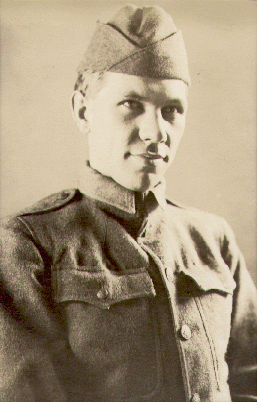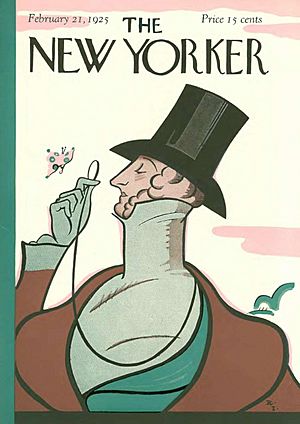Harold Ross facts for kids
Quick facts for kids
Harold Ross
|
|
|---|---|
 |
|
| Born |
Harold Wallace Ross
November 6, 1892 Aspen, Colorado, U.S.
|
| Died | December 6, 1951 (aged 59) Boston, Massachusetts, U.S.
|
| Resting place | Emerald Mountains Aspen, Colorado |
| Occupation | Publisher |
| Known for | Co-Founding The New Yorker |
Harold Wallace Ross (born November 6, 1892 – died December 6, 1951) was an American journalist. He helped start The New Yorker magazine in 1925. He was its main editor until he passed away.
Contents
Harold Ross's Early Life and Career
Harold Ross was born in a small cabin in Aspen, Colorado. His father, George Ross, was a miner. His mother, Ida Ross, was a schoolteacher. When he was eight, his family left Aspen. They moved because the price of silver dropped. They lived in different towns before settling in Salt Lake City, Utah.
Starting Work Young
In Utah, Harold worked on his high school newspaper. He also wrote for The Salt Lake Tribune, a big daily newspaper. At 13, he left school and went to Denver. There, he got a job at The Denver Post. He later returned to his family but did not go back to school. Instead, he worked for the Salt Lake Telegram.
By the time he was 25, Harold had worked for many different newspapers. These included papers in Marysville, California, Sacramento, Panama, New Orleans, and Atlanta. He even worked for the Brooklyn Eagle and the San Francisco Call.
Reporting and War Service
In Atlanta, Harold covered a famous murder trial. During World War I, he joined the U.S. Army. In France, he edited a newspaper for soldiers. He also worked for the Stars and Stripes in Paris. There, he met other writers like Alexander Woollcott and Jane Grant. Jane Grant later became his first wife. She also helped him start The New Yorker.
After the war, Harold returned to New York City. He became the editor of a magazine for veterans. This magazine later joined another one. He also worked for a humor magazine called Judge.
Creating The New Yorker Magazine
Harold Ross dreamed of a new kind of magazine. He wanted it to be smart and stylish, focusing on city life. So, he started The New Yorker with his wife, Jane Grant. The first issue came out on February 21, 1925. They worked with Raoul Fleischmann to create the F-R Publishing Company.
Gathering Talented Writers
Harold Ross was part of a famous group of writers and artists. They met at the Algonquin Round Table. He used his connections to help get The New Yorker off the ground. He brought in many talented writers. Some famous names included James Thurber, E. B. White, Dorothy Parker, and J. D. Salinger.
Harold had a clear idea for the magazine. He wanted stories to feel easy and natural. He didn't want anything to seem too serious or academic. He also didn't like sad stories or articles about social problems. He called them "grim."
The New Yorker During World War II
During World War II, many writers joined the war effort. The New Yorker had a small staff. Harold Ross and his assistant, William Shawn, worked very long hours. They even published some articles from the U.S. War Department.
One famous story was about future president John F. Kennedy. It was called "Survival" and written by John Hersey. Kennedy's father thought The New Yorker was too small. So, Harold allowed the story to be reprinted in Reader's Digest. This helped many people read about Kennedy.
Harold Ross as an Editor
Harold Ross worked very hard on the magazine. He wanted every sentence to be clear and short. He was known for asking writers, "Who he?" if a person wasn't well-known. He believed only a few people, like Harry Houdini and Sherlock Holmes, were known by everyone. He also used a lot of commas!
Harold knew he hadn't finished school. So, he treated Fowler's Modern English Usage like a guide. He edited every single issue of The New Yorker until he died. That's 1,399 issues! He chose William Shawn to take over as editor after him.
Many people remembered Harold Ross as a unique person. He was known for his jokes, his temper, and his drive for perfection. He was also a bit uncomfortable in social situations. All these traits shaped The New Yorker and its staff. A journalist once said that after meeting Ross, he realized "nobody else in the world could" edit The New Yorker.
Harold Ross's Passing
Harold Ross passed away in Boston, Massachusetts, in December 1951. He had an operation for lung cancer. He died from heart failure during the surgery.


